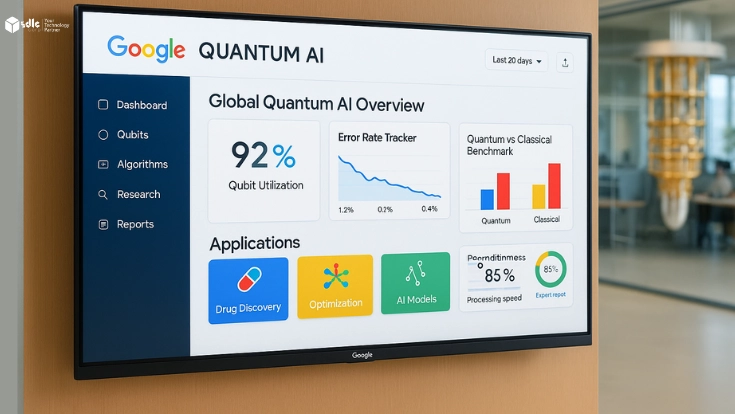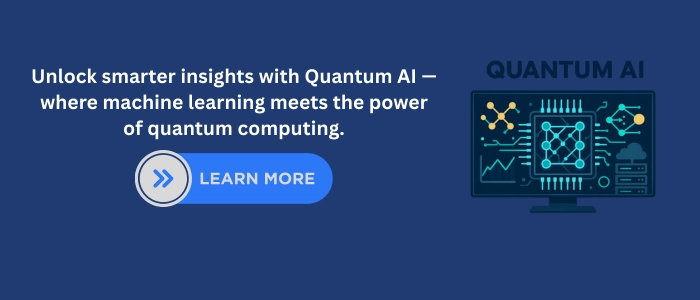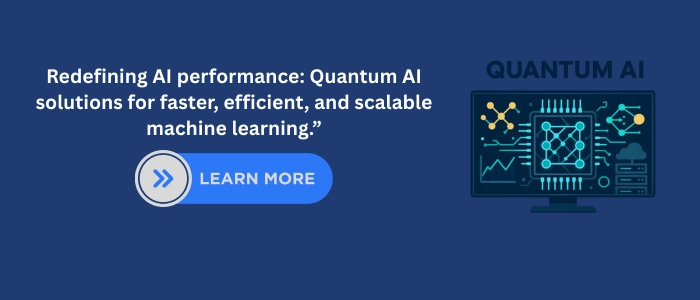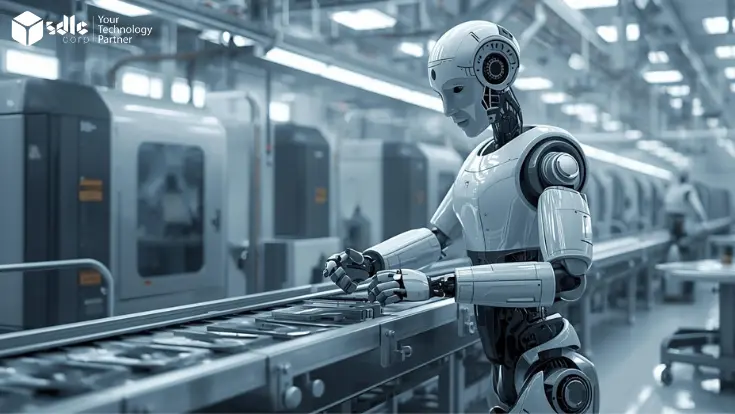Introduction
Quantum AI is redefining how machines learn and make decisions. By combining quantum computing with artificial intelligence, researchers are solving problems that classical systems struggle with. Quantum bits (qubits) use principles like superposition and entanglement, enabling faster calculations and complex simulations. This unique approach creates opportunities for optimization, pattern recognition, and predictive modeling that were not practical before.
For related insights, check our detailed blog on AI for Aerospace with SDLC Corp.
At the core of this field is quantum machine learning, which adapts learning algorithms to exploit quantum properties. These systems can handle massive datasets and complex probability distributions with improved efficiency. Alongside it, hybrid quantum-classical models act as a bridge, blending quantum speed with classical reliability.
This blog explores how quantum neural networks (QNNs), quantum algorithms for ML, and quantum computing in AI innovation are shaping the future. The discussion highlights technical details, real-world applications, and the challenges that must be solved before quantum AI becomes mainstream.
The Foundations of Quantum AI
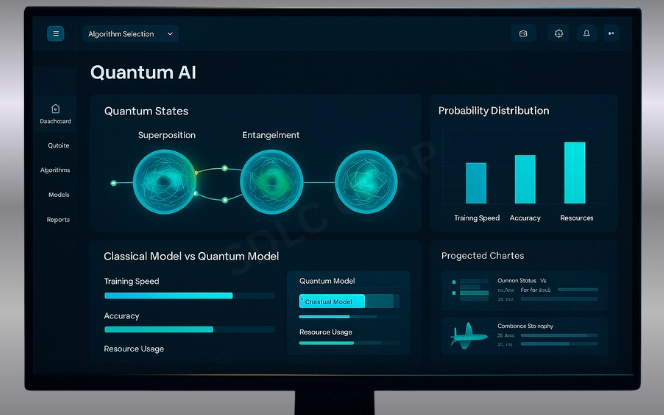
Quantum computing differs from classical computing because qubits can exist in multiple states simultaneously. This allows exponential increases in computational possibilities.
- Classical bit: 0 or 1.
- Quantum bit (qubit): Can be 0, 1, or both (superposition).
- Entanglement: Links qubits so that the state of one influences another.
Quantum AI uses these features to enhance machine learning models. For example:
- Training data can be processed in parallel.
- Optimization tasks require fewer iterations.
- Probabilistic data fits naturally into quantum-based models.
Real-world examples are already visible. In cryptography, quantum systems can process vast key spaces faster than classical tools. In logistics, companies experiment with route optimization that adapts in real time. Financial firms test portfolio simulations using quantum processors to evaluate risks more comprehensively. These examples highlight why Quantum AI is considered one of the most disruptive technologies of the coming decades.
Quantum Machine Learning in Practice
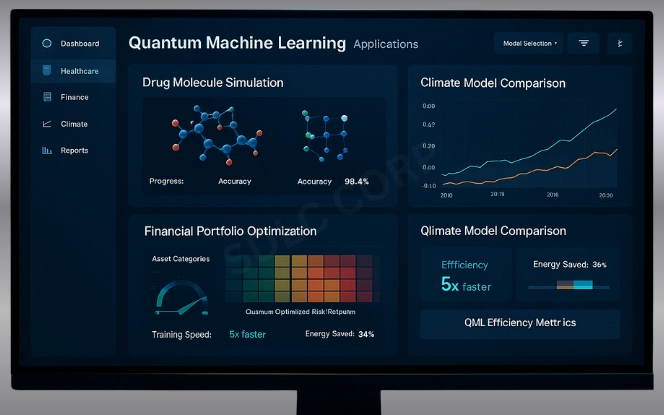
Quantum machine learning is already being tested across industries.
- Healthcare: Simulating molecules for drug discovery.
- Finance: Optimizing portfolios by running thousands of scenarios at once.
- Climate science: Modeling large environmental systems for prediction.
Key benefits include:
- Faster training: Quantum models test multiple states simultaneously.
- Energy efficiency: Reduced iterations mean lower energy use compared to large classical data centers.
- High-dimensional learning: Quantum states represent complex patterns more effectively.
Challenges remain in accuracy and hardware stability. Quantum computers are still error-prone, and scaling them requires improvements in fault tolerance. Yet the progress shows clear direction.
Learn more about real-world use cases in our post on AI in Healthcare Innovation
The Role of Hybrid Quantum-Classical Models
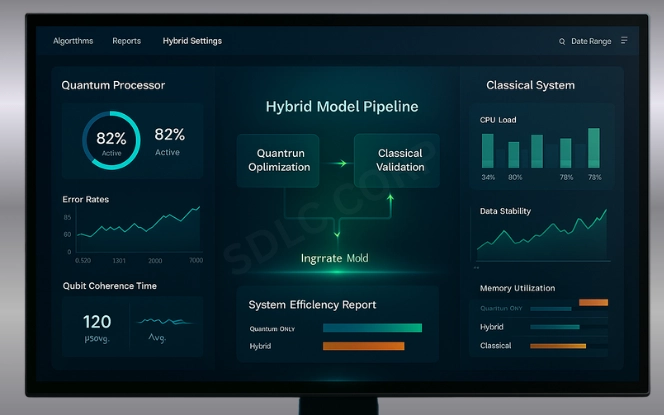
Hybrid quantum-classical models are practical systems that split work between classical and quantum processors.
How it works:
- Quantum processors: Handle optimization, probability-based tasks, or simulations.
- Classical processors: Manage input-output, error correction, and stability.
Examples in use:
- Logistics: Optimizing delivery routes for global supply chains.
- Energy: Predicting grid demand and improving efficiency.
- Manufacturing: Enhancing resource allocation and reducing waste.
This hybrid approach is valuable because quantum hardware alone cannot yet perform reliably at scale. By combining strengths, organizations gain real-world benefits without waiting for fully fault-tolerant quantum computers.
Explore further in our article on Introduction to Machine Learning
Quantum Neural Networks (QNNs) Explained
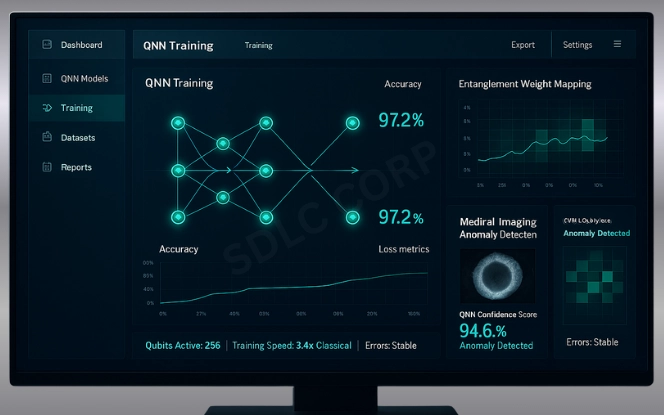
Quantum neural networks (QNNs) take neural network principles into the quantum space. Instead of nodes and weights, they use quantum states and transformations.
Advantages of QNNs:
- Parallelism: Process multiple data points at once.
- Adaptability: Capture relationships using entanglement.
- High-dimensional data: Work well with genomics, imaging, and natural language.
Example use cases:
- Medical imaging: Detecting subtle anomalies in large datasets.
- Linguistics: Processing natural language with context awareness.
- Security: Identifying patterns in threat detection.
QNNs are still experimental, but they could reshape learning once quantum hardware matures.
Quantum Algorithms for ML
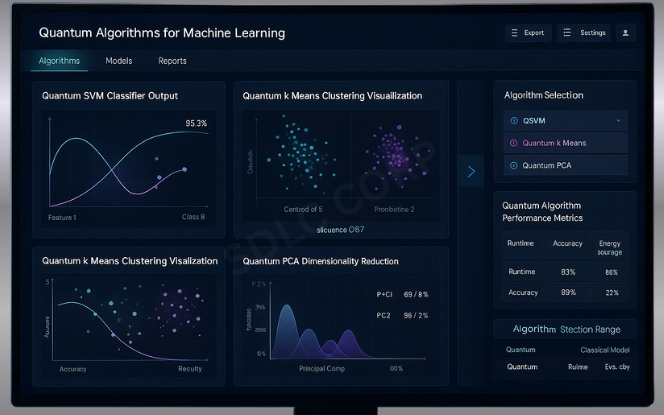
Quantum algorithms for ML extend machine learning with quantum techniques.
Key examples:
- Quantum Support Vector Machines (QSVMs): Classify data faster with fewer resources.
- Quantum k-Means: Cluster massive datasets with efficiency.
- Quantum PCA: Reduce dimensionality to simplify data analysis.
Benefits:
- Optimization power: Evaluate multiple solutions at once.
- Scalability: Handle larger datasets with fewer steps.
- Speed: Reduce training and inference time.
Quantum algorithms align well with industries where efficiency and speed are critical, such as trading, medical analysis, and logistics.
Dive deeper into algorithmic power in our blog on How Do AI and Algorithms Different From Each Other?
Quantum Computing in AI Innovation
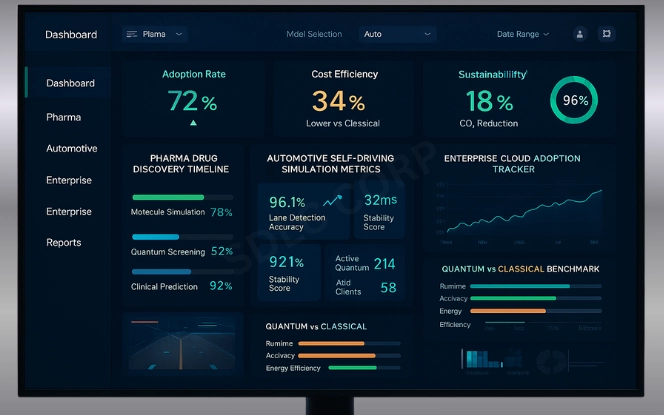
Quantum computing in AI innovation is moving from theory to application.
- Pharma: Predicting drug interactions faster.
- Automotive: Improving simulations for self-driving systems.
- Startups: Creating accessible cloud-based quantum APIs for developers.
Impact areas:
- Accessibility: Cloud services let developers test quantum algorithms without owning hardware.
- Sustainability: More efficient training reduces energy use.
- Scalability: Industries adopt hybrid frameworks to extend capacity.
These trends suggest that quantum AI will shift from research labs to practical tools within the next decade.
Discover real-world enterprise adoption in our Enterprise AI Development Company page.
Technical and Practical Challenges
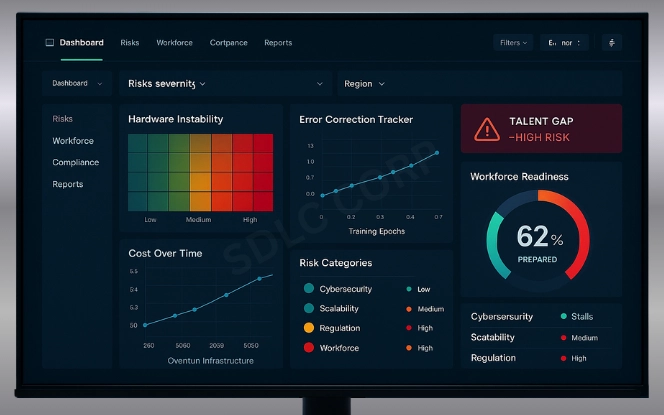
Despite its promise, Quantum AI faces barriers:
- Hardware instability: Qubits are prone to noise and errors.
- Error correction: Requires complex coding to ensure reliability.
- Scalability: Most machines operate with fewer than 500 qubits.
- Talent gap: Skilled professionals are limited.
- Regulation: Ethical and security standards are still evolving.
Cybersecurity is also a growing concern. Quantum systems could potentially break classical encryption, which creates both opportunities and risks. Industries must invest in post-quantum cryptography to protect sensitive data.
Cost is another major issue. Current quantum computers and quantum cloud services are extremely expensive to build or access, limiting adoption for small and medium-sized enterprises. While some large corporations and research labs can afford pilot programs, wider use will depend on cost reductions and more affordable service models.
Workforce readiness is equally important. Quantum computing requires a mix of physics, mathematics, and AI expertise. The number of professionals with this knowledge is still very limited. Universities are starting to expand programs, and industries are launching training initiatives, but building a skilled workforce will take time. Without this preparation, industries may find it difficult to integrate quantum AI into production environments.
By addressing these technical, financial, and human challenges, industries can move closer to making Quantum AI a reliable, scalable, and sustainable solution.
Future Outlook
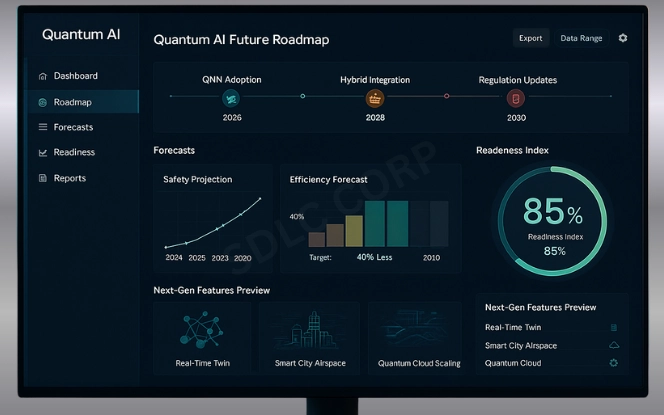
The next decade of quantum AI will focus on hardware development, better algorithms, and smoother integration.
Expected trends:
- Broader adoption of hybrid quantum-classical models.
- Expansion of quantum neural networks (QNNs) in pattern recognition.
- More quantum algorithms for ML in finance, healthcare, and logistics.
- Growth in quantum computing in AI innovation through cloud-based platforms.
- Stronger regulatory and ethical frameworks to govern use.
Quantum AI has the potential to reshape industries by making large-scale learning faster, cheaper, and more accurate.
Conclusion
Quantum AI combines the principles of quantum mechanics with artificial intelligence, creating a new path for solving complex problems. Quantum machine learning speeds up training, hybrid quantum-classical models offer practical solutions, and quantum neural networks (QNNs) show how future models may operate. With quantum algorithms for ML and growth in quantum computing in AI innovation, industries from healthcare to logistics are beginning to see real value.
Looking ahead, workforce readiness will play a crucial role. Professionals must adapt to quantum-era skills, and global collaboration between governments, industries, and academia will be vital. Quantum AI not only drives innovation but also encourages sustainable practices through energy-efficient computing.
The road ahead includes challenges, but the promise is clear. Quantum AI will contribute to smarter systems, better predictions, and sustainable progress.
Contact us SDLC Corp to explore how Quantum AI can impact your business. To accelerate results, Hire AI Development Services with SDLC Corp and start building solutions today.
FAQs
What Is Quantum AI And How Does It Work?
Quantum AI combines quantum computing with artificial intelligence to process data faster using qubits. It allows systems to solve optimization, simulation, and pattern recognition tasks beyond classical computing limits.
How Is Quantum Machine Learning Used In Real Applications?
Quantum machine learning is applied in drug discovery, finance, logistics, and climate modeling. It reduces training time, improves efficiency, and can analyze high-dimensional data sets more effectively than classical systems.
Why Are Hybrid Quantum-Classical Models Important?
Hybrid quantum-classical models combine quantum processing speed with classical stability. This makes them practical for industries today while hardware continues to evolve. They are already used in logistics optimization and energy management.
What Are Quantum Neural Networks (QNNs) And Their Benefits?
Quantum Neural Networks (QNNs) apply quantum states to represent information, enabling parallelism and improved accuracy. They are particularly valuable for medical imaging, natural language processing, and security applications.
How Will Quantum Computing Drive AI Innovation In The Future?
Quantum computing in AI innovation will accelerate breakthroughs in self-driving cars, pharmaceuticals, and enterprise solutions. Cloud-based quantum APIs are already making these technologies accessible to developers and businesses.

